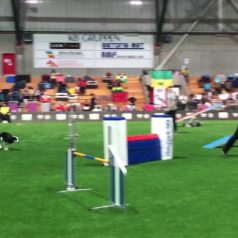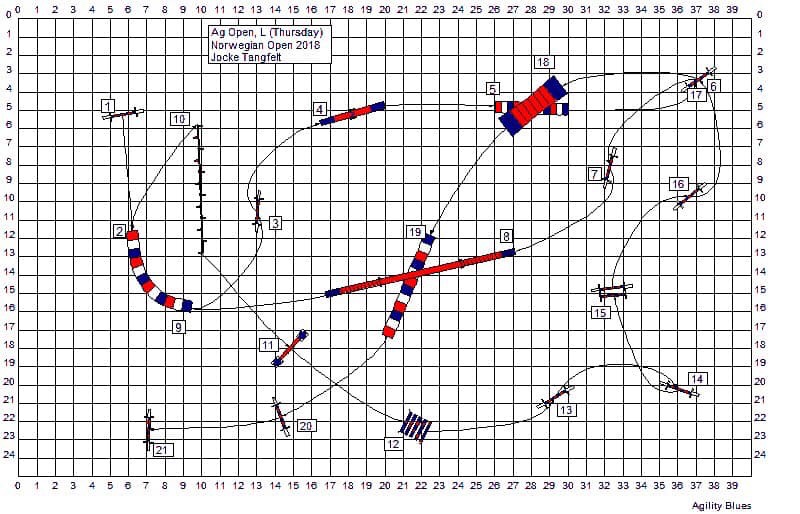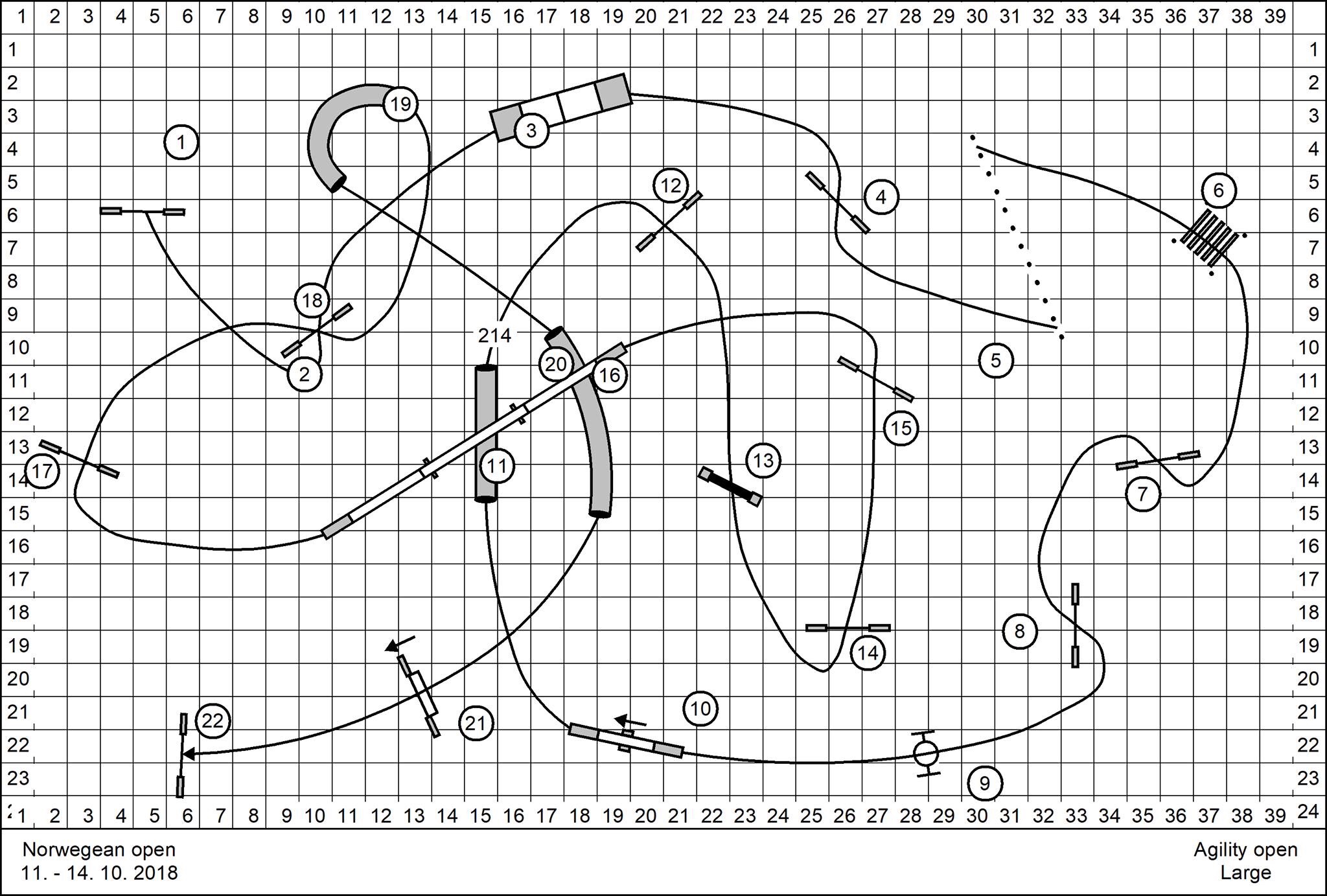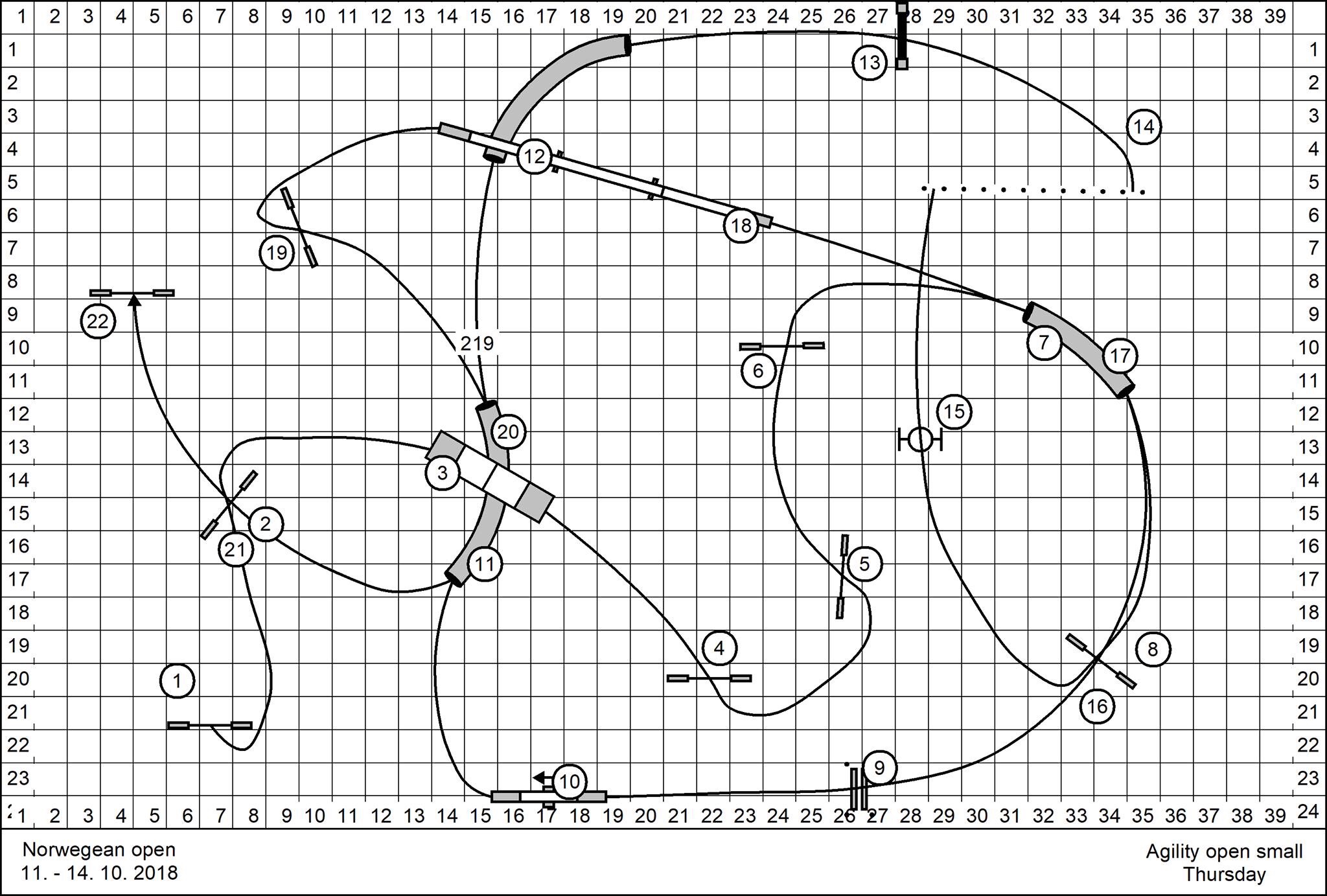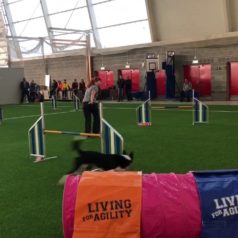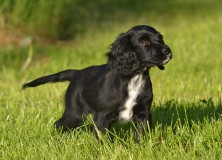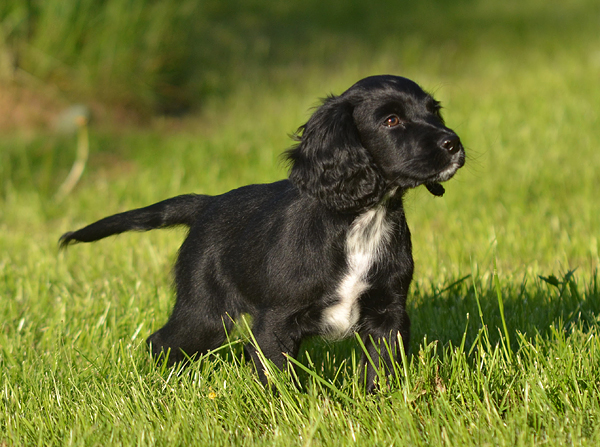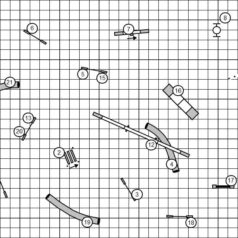
Course Design Trend #2: Tunnel/Backside Jump Discrimination
The second trend that we saw quite a lot of at Norwegian Open is the discrimination between a tunnel straight ahead and a backside jump close to the tunnel entry. It’s not the first time we’ve encountered this during 2018 and it’s been one of my focuses in training all year. If you’ve been to a handling seminar with me this year, you’ve probably seen it too. There were a few discriminations like this in Nicolas Renaud’s world championship courses for medium dogs. I couldn’t find the course maps from NO that I was thinking of, but here are Renaud’s courses from AWC.
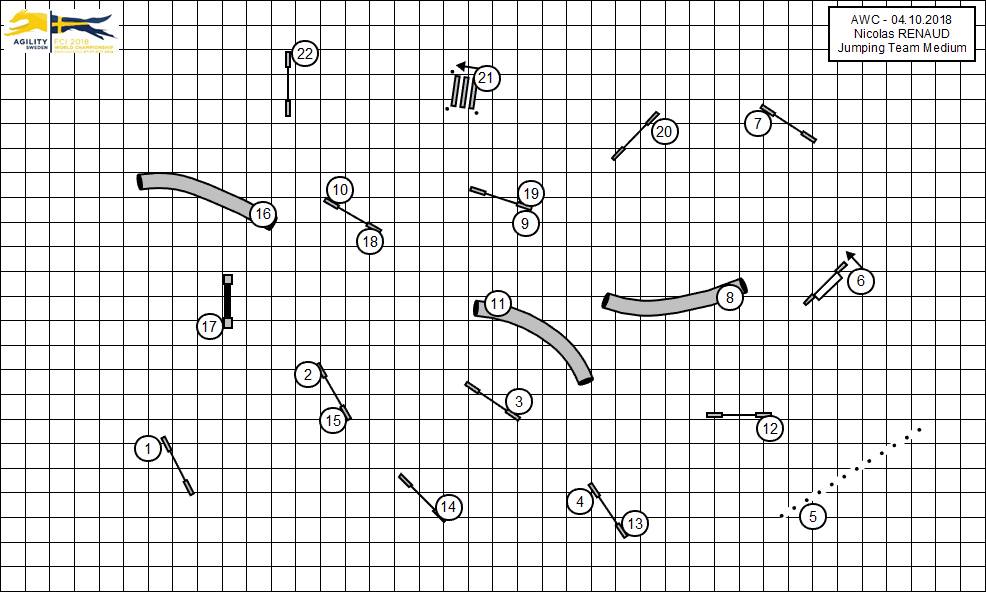
This jumping course started with a discrimination between the backside jump of 3 and tunnel #11. More teams than I would have thought fell in that trap and were eliminated at the beginning of the run.
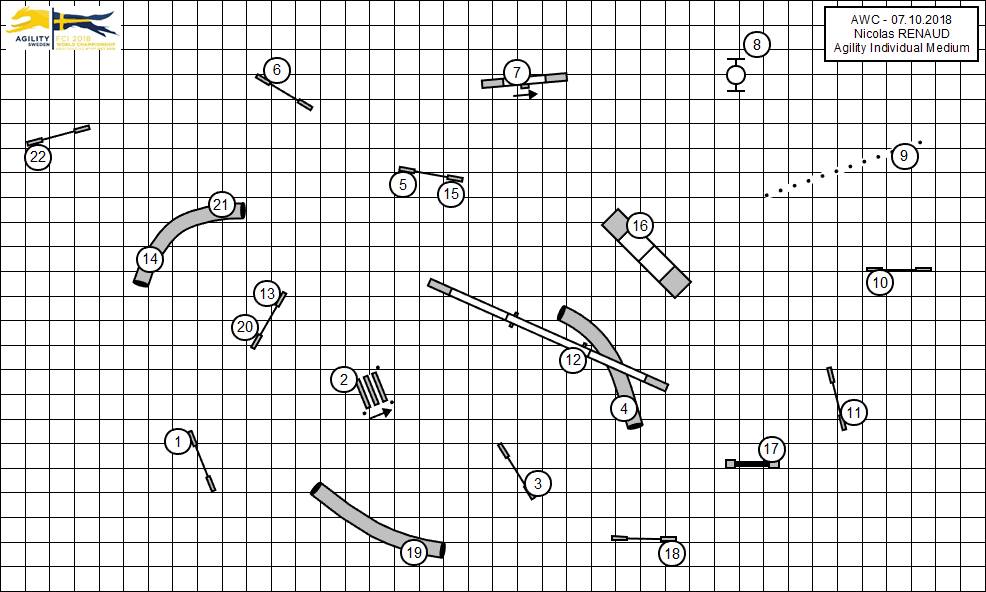
This epic final course for medium dogs had a difficult discrimination after the dogwalk. These types of discriminations are so much more difficult when you have to run fast as a handler and keep moving without showing deceleration. We saw some very impressive handling and verbal control in this course, but also a lot of dogs choosing to go straight into the tunnel. At Norwegian Open, we had a similar sequence in Vittorio Pappavero’s A3 course on Sunday. Unfortunately, I haven’t found the course map. Bud and I nailed the discrimination and handling, but unfortunately, he went back onto the dogwalk when he came out of the tunnel, like many other dogs.
Some examples from NO that I’ve tried to recreate:

This situation from a jumping course gave us some trouble. We were clean in this run but lost a lot of time around this discrimination. Bud was looking at the off-course tunnel and I got scared and slowed down to get him to the correct jump, which put me behind for the next obstacle where I had to pull him off another tunnel and into the weaves because I was behind and not clear. I think we’ve trained on this a lot, but obviously not enough. I tried to cue the backside before Bud even took off at 12, and told him even before that that he wouldn’t be going straight into the tunnel – he needs very early information – but he still looked at it. We’ve done a lot of training on verbal discrimination, but what I think is missing is me running fast towards the tunnel and him coming with more speed than when we’re training on just a few obstacles.

This start was tricky! Not so much because of the discrimination at 5 – although I saw quite a few dogs take the tunnel – but because it was difficult to make it to #5 at all as a handler. Rear crossing #4 is very difficult as it turns the dog to the wrong side of #5. Getting two blind crosses in between 2-3 and 3-4 was doable, but difficult to get right as the dog came so fast over the long jump. I decided to run this sequence with dog on left all the way from 1-5 and just stay ahead and be in serpentine position at the landing side of 3. I think it worked really well, but he touched the end of the long jump and was faulted as it fell down. We really need to train (soft) long jumps!
How do you feel about this challenge? How do you train it?


